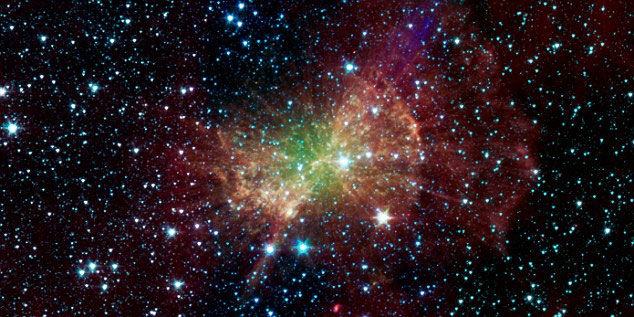Revealing the day of the sun
Astronomer Bill Snyder photographed the Dumbbell nebula, a cloud of dust of a star, showing us the prospect of our solar system's apocalypse.
He said: 'All the gas and dust in the picture comes from inside a star'. When the sun-like stars die, they will be released outside the clumps of gas, forming a giant cloud lit by the star's death. And our sun will die out in the next 5 billion years and release the same nebula.
The Dumbbell Nebula is about 1360 light-years away from the Earth, so it's easy to see by peeping or amateur telescopes.

The Dumbbell Nebula is a planetary nebula, the rest of a star is like
Our sun will leave when the internal nuclear reactions are over.
According to Daily Mail , the nebula was discovered by astronomer Charles Messier in 1764 when he was making a list of light-diffusing objects that should not be confused with comets. And object number 27 on this list today is called the M27 or Dumbbell nebula because of the light shape it emits when viewed through the telescope as a dumbbell. This is a planetary nebula , the kind of nebula that our sun will produce when the melting reactions inside the sun end.
Measuring the expansion of the nebula's material led to the hypothesis that its age was about 3000 or 48,000 years, plus 1360 light years from this nebula to Earth.
Understanding the nebula's physical mechanism is beyond the reach of science in the 18th century, the name 'planetary nebula' is derived from the hypothetical homology with the giant gas planet, why Carpentry.
Even today there are still many mysteries about this bipolar nebula , such as which forces blew away the star's outer shells of gas, leaving the shells heated by the nucleus. of the dead star and glistening with visible colors. This nebula is 4.5 light-years across, farther than the distance between our sun and its nearest star.
- Detecting huge black holes revealing the universe at the age of cradle
- Written words reveal people's personality and health
- The US government is close to revealing secrets about aliens
- Use Facebook, revealing secrets like playing!
- Revealing secrets of Truong Yen ancient stone block
- The oldest wheel in the UK excavated, revealing secrets 3,000 years ago
- Revealing attack code for zero-day errors Mac OS X
- Revealing Mona Lisa's whereabouts
- Revealing the mystery of the period of
- Revealing secrets of snakes
- Revealing the child's first voice secret
- Revealing the great lie in the morning in the love story
 Van Allen's belt and evidence that the Apollo 11 mission to the Moon was myth
Van Allen's belt and evidence that the Apollo 11 mission to the Moon was myth The levels of civilization in the universe (Kardashev scale)
The levels of civilization in the universe (Kardashev scale) Today Mars, the sun and the Earth are aligned
Today Mars, the sun and the Earth are aligned The Amazon owner announced a secret plan to build a space base for thousands of people
The Amazon owner announced a secret plan to build a space base for thousands of people